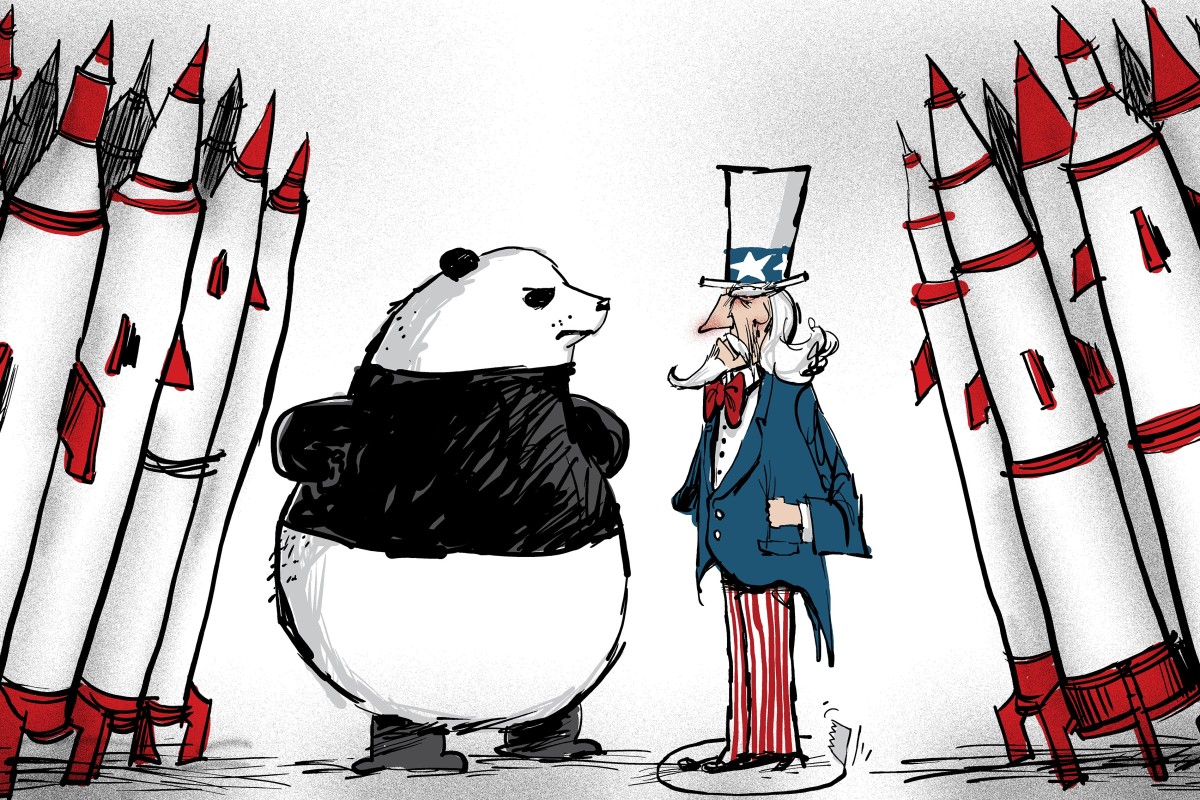The power struggle is on as America and China enter a competitive relationship the likes of which the world has never seen, with military spending the centrepiece. Neither side wants war, but the competition will be bruising

Illustration: Stephen Case
The defining character of the relationship between China and the United States has, for decades, been based on a gradual transition of power. Beijing recognised this early on, but a lot of powerful people in Washington did not realise what was happening until relatively recently.
They had believed that the bilateral relationship was primarily about commerce. Now that it is apparent what the relationship really is about – the slow devolution of powerfrom Washington towards Beijing – it is having a profound impact on how the two nations interact and compete.
As China continues to grow stronger, it will become increasingly
less inclinedto compromise on issues it views as important to Chinese national interests. In response, Washington may find it increasingly challenging not to overreact.
With American foreign policy adrift over the first two decades of this century, China’s Communist Party realised that it had a strategic opportunity to fill in the gaps the US left behind by virtue of its isolationism, and proceeded to build its own set of alliancesto make up for lost time.
China’s leadership seeks to secure the Communist Party’s objectives without jeopardising regional stability or the party’s monopoly on power – both of which remain critical to the country’s economic development.
In New Year’s Eve speech, Xi Jinping ‘hopes for the best’ for Hong Kong in 2020
China’s leaders have deployed a multitude of tactics – short of armed conflict – to pursue China’s strategic objectives through activities deliberately designed not to provoke armed conflict with the US, its allies or other actors in the Indo-Pacific.
Such tactics are particularly evident in the South China Sea, where Beijing went as far as it could possibly go with its
military build-upon the Spratly and Paracel Islands without prompting a counter-military move by the US. Over the past two decades of US actions in Afghanistan, Iraq and Syria, China has been able to observe American military fighting capabilities.
The People’s Liberation Army has transformed itself from an antiquated fighting force to a highly capable, modern military. This modernisation has largely optimised the PLA’s air and naval forces, conventionally armed ballistic missiles, and counterspace and cyber capabilities. Given its global military responsibilities, the US is
less able to optimiseits armed forces solely as they apply to Asian scenarios.
First made-in-China aircraft carrier, the Shandong, enters service
America’s principal military objectives are to maintain security, avoid conflict, reduce risk, and manage existing and emerging security challenges to minimise outcomes that undermine US interests or limit its opportunities.
The US government perceives that China has a similar interest in avoiding conflict, reducing risk and managing tension, but it expresses these goals in somewhat different terms. The Chinese government believes that the proper framework for managing such bilateral issues is to build a
new type of relationshipto address the issues as much as the outcomes themselves. And it wants to be treated as an equal partner.
The US fully understands that China firmly opposesUS military operations outside its territorial waters and the Chinese assertions that such acts are constituent elements of a strategy to contain China, but it also strongly believes that this Chinese perception is disproven by four decades of policy and practice.
Washington sees its post-war security commitments as having created a security environment in which unprecedented economic prosperity has occurred in Asia, as well as in China.
The American government believes that China is pursuing changes to the status quoin incremental ways that could preclude direct military responses. It worries that such moves serve to undermine its credibility in the region, particularly among its allies and partners.
Since the People’s Republic of China was born in 1949, there have been many opportunities for both countries to escalate tension and trigger military conflict. Neither Beijing nor Washington believed that line should be crossed. Despite the heightened tension resulting from their trade war, there remains every reason to presume that neither desires to cross that line in the future.
A year of the US-China trade war
Although the degree of tension has never been as high as it is now, there remains every reason to believe that the two countries are not inching towards war. It is ultimately the degree of
economic painboth countries can endure, and the length of time it can be endured, that will determine the economic outcome of this trade war.
There is also every reason to believe it will not result in military conflict, but rather, mutual respect. Although the desire to continue a bilateral trading relationship that is mutually beneficial in the long term is strong, what is unknown is how long it will take to arrive at an equilibrium, and at what cost for both countries.
What can be said with some degree of certainty is that with the gloves now off, in every respect, America and China are about to enter a competitive relationship the likes of which the world has never seen, in scope or scale. Military spending will be the centrepiece of that competition.
As advanced as the incredible weaponry that has been developed already is, a decade or two from now, the world will have entered the era of futuristic warsfought by generals behind keyboards, using robots, drones and autonomous vehicles. China and America will both be at the forefront of that era.